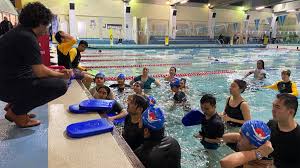
For swimming instructors, access to quality resources is key to delivering effective, safe, and engaging lessons. With proper training tools and support materials, instructors can enhance their teaching methods, improve student outcomes, and create a positive learning environment for all swimmers. Here’s a look at some essential resources every swim instructor should consider.
1. Lesson Planning Materials
Effective lesson planning helps instructors outline clear objectives, tailor exercises to students’ skill levels, and ensure a balanced focus on technique and water safety. Many instructor resources include templates, sample lesson plans, and age-specific teaching tips, which are invaluable for both new and experienced instructors looking to streamline their planning process.
2. Skill Development Tools
To aid skill acquisition, instructors benefit from resources like buoyancy aids, kickboards, and pool noodles, which help build confidence and technique in the water. Other aids, such as visual cues and underwater markers, are particularly helpful for young learners who rely on clear, engaging tools to follow along and practice effectively.
3. Safety Guidelines and Emergency Training
Safety resources are foundational for all aquatic programs. Access to up-to-date emergency response techniques, CPR guidelines, and best practices in water safety ensures instructors are prepared to handle any situation that arises. Regular training in these areas is crucial, not only to ensure compliance but also to build trust with students and their families. Check out specific Instructor resources to keep safety knowledge current and accessible.
4. Continuing Education and Certification Programs
Continuing education opportunities allow instructors to refine their skills and expand their knowledge. Many programs offer courses on advanced techniques, working with special populations, or adapting lessons for students with disabilities. Certification renewals and advanced training help instructors stay compliant with industry standards and expand their expertise in specialised areas.
5. Digital Resources and Apps
Digital resources, including apps for tracking progress, planning classes, or even demonstrating techniques, are becoming increasingly popular in aquatics education. Video demonstrations and mobile apps allow instructors to offer visual aids during lessons, making complex skills easier for students to understand. Digital tools also make it easy to provide personalised feedback, track each swimmer’s improvement, and adjust lesson plans accordingly.
6. Networking and Support Communities
Instructor networks provide a space to exchange ideas, share experiences, and stay updated on industry trends. Many associations and online platforms offer networking opportunities where instructors can connect, discuss challenges, and gain insights from peers. Support communities also give access to forums, resources, and advice on enhancing teaching methods.
Conclusion
Equipped with quality instructor resources, swimming instructors can provide engaging, safe, and effective lessons. From planning materials to digital tools, these resources support skill development and help instructors build confidence in their teaching. Accessing reliable resources ensures that each lesson meets high standards, fostering a positive learning experience for every student.
